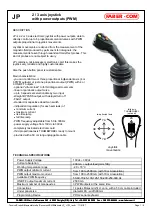
ACU-100 SATEL
15
If the D
LOAD
10 program fails to communicate with the computer after connection of the
RS-232 port, you should:
−
check that the option of programming by means of RS-232 port has been selected on the
controller DIP-switches;
−
check that the port through which the computer communicates with the controller has been
properly selected in the D
LOAD
10 program;
−
check that the cables connecting the computer with controller have been properly
connected.
4.4 C
ONNECTING THE
ACX-100
INPUT
&
OUTPUT EXPANSION MODULES
The ACU-100 controller communication bus can accept up to five ACX-100 input & output
expansion modules.
The modules can only be connected when the controller is
configured as a wireless device module interfacing with any alarm control panel.
COM
TMP
COM
+12V
ITMP
TMP
A
RS485
B
CLK
DA
T
COM
TPR CON JAM LBA OUT1OUT2 OUT3 OUT4 OUT5 OUT6 OUT7 OUT8 COM AR1 AR2 AR3 AR4
ACU-100
COM
DAT CLK
12V TMPTMP
A0
A1
A2
ACX-100
1
COM
DAT CLK
12V TMPTMP
A0
A1
A2
ACX-100
0
Fig. 6. Example of connecting two ACX-100 modules (addresses 0 and 1) to ACU-100
controller.
The modules should be connected to the controller bus in parallel. The connection can be
made by means of the unscreened straight-through cable (using the "twisted pair" type of
cable is not recommended). When connecting the modules, remember to set the correct
number of ACX-100 modules connected to the controller on the controller DIP-switches. Lack
of communication with the module will be signaled on the TPR output as tamper.
Each module connected to the bus must have a different address set from the range 0 to 4.
These addresses must correspond to the number of a next module, as shown in Table 4. If
one ACX-100 module is connected to the controller, it must have address 0 set, if two, one of
them must have address 0 set, and the other address 1, etc.
The numeration of control inputs and outputs of the expansion module in the system depends
on the address set in it (see: table 4).
The module TMP terminals must be connected to the control panel tamper circuit.
















































